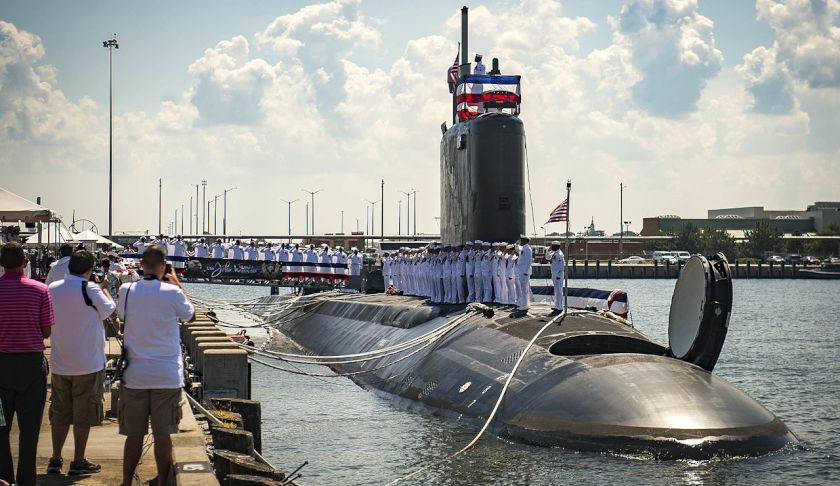The Attack Class submarines will serve as the tip of the nations strategic deterrence spear. To meet this role, both the US and Sweden have developed concepts to enhance the long-range maritime strike capabilities of the Royal Australian Navy’s future submarines.
To continue reading the rest of this article, please log in.
Create free account to get unlimited news articles and more!
Submarines are the ultimate force multiplier and strategic deterrent platform for many modern navies. Australia's Collins Class, despite a troubled early life, have quickly established themselves as some of the world's best conventionally-powered attack and guided missile submarines, providing Australia with a potent at-sea deterrence platform.
Building on this precedent, the Attack Class submarines will be required to fill a similar and possibly expanded deterrence role to that of the Collins Class vessels, providing enhanced range, time on station and an advanced suite of weapons systems in a regionally superior submarine platform.
ASPI executive director Peter Jennings highlighted the importance of these strategic deterrence capabilities to Defence Connect, saying, "We need to be placing more effort into developing the long-range strike capability, this includes things like cruise missiles, which can be launched by platforms across the ADF. We also need to place greater emphasis on upgrading the capability provided by Collins, not just as a stop-gap, but as an imperative, as these submarines will continue to form the point of our deterrence spear for some time yet."
While Defence Connect has extensively covered the evolution of Sweden's Gotland Class submarines, for which the Collins Class served as the design basis, recent developments made by both Sweden and the US in the space of submarine mounted, vertical launch modules provide interesting design concepts for integrating into Australia's future Attack Class submarines.
BAE Systems Virginia Payload Module (VPM): The VPM is an additional mid-body section being integrated into the US Navy’s Virginia Class submarines, beginning with the second boat of Block V to begin construction in 2019.
Each VPM contains four large-diameter payload tubes, each capable of storing and launching up to seven Tomahawk cruise missiles. Accessible while at sea, the VPM also offers an unprecedented amount of flexibility in the potential integration of future payloads.
Joe Senftle, vice president and general manager of weapon systems at BAE Systems, said, "The new Virginia Payload Module will bring an additional 28 missiles to each Virginia Class submarine, tripling their payload strike capacity."
The additional Virginia Payload Tubes (VPT) will add to the existing tubes located in the bow-mounted weapons system of the Virginia Class submarines, which are capable of launching six Tomahawk cruise missiles.
Saab Kockums A26 Vertical Launch System: The Saab A26 is an evolution of the Gotland Class vessels with two distinct variants focusing on different operational parameters. The Oceanic - Extended Range variant incorporates three, six-round (total of 18) vertical launch tubes, similar in function to the VPM.
The design and planned incorporation of this 10-metre module is the first time such a vertical launch module has been designed for incorporating into a conventionally-powered submarine platform, as such land attack cruise missile capabilities are traditionally the realm of larger, nuclear submarines.
Such payload modules are not limited to land attack missile and strike capabilities, as key under-sea technologies including unmanned underwater vehicles (UUV) for intelligence, surveillance and reconnaissance, anti-ship attack capacity, mine hunting and special forces support enhance the operational and capability profiles of submarines.
For Australia's Attack Class submarines, the inclusion of such a vertical launch module/s could serve to dramatically increase the deterrence capabilities of the strategically valuable platforms.
The Attack Class submarines will be delivered as part of the $50 billion SEA 1000 program, which will see Naval Group deliver 12 of the vessels to the RAN.
Naval Group's successful Shortfin Barracuda design, which serves as the basis for the new Attack Class, is a conventionally powered variant of the nuclear-powered Barracuda fast attack submarine currently under construction for the French Navy.
The Attack Class will enter service with the RAN at a time when 50 per cent of the world’s submarines will be operating in the Indo-Pacific region.
Have your say in the comments section below, or get in touch with

 Login
Login







